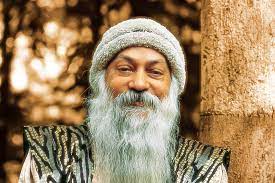


Sadhguru emphasizes that true success arises from a mind organized towards a singular direction, contrasting it with accidental success, which often leads to anxiety and suffering. He articulates that the mind, when not directed purposefully, can cause unrest and hinder success.
Achieving success requires harnessing both body and mind towards a defined goal. However, the fundamental aspect lies in having control over the mind’s functioning and aligning it with one’s intentions. Sadhguru conducts a simple experiment illustrating how the mind tends to dwell on what one seeks to avoid, showcasing its tendency to wander off course.
He shares an anecdote about a soccer team struggling with nervousness and foul language during their play. After an insightful session, the team won their game after years of defeats, highlighting the transformative power of managing the mind effectively.
Sadhguru underscores that many endure moments of unpleasantness daily, experiencing irritation, anger, or fear. This emotional turbulence occurs because the mind does not heed commands. He asserts that the inability to manage one’s mind leads to accidental success, often causing fear and anxiety as individuals find themselves in positions without intent or conscious effort.
The distinction between success by intent and accident becomes pivotal. Those who achieve success by accident often live in perpetual fear, lacking confidence in their abilities. Sadhguru stresses that self-created suffering accompanies accidental success. Managing large enterprises or industries without controlling one’s mind reflects management by accident rather than intent, which ultimately leads to distress.
The crux of Sadhguru’s teaching lies in the necessity of organizing the mind towards a specific direction. He likens a well-organized mind to a Kalpavriksha in yoga, emphasizing that an organized mind can steer the body, emotions, and energies in a singular direction. With such alignment, manifesting desired outcomes becomes natural, requiring no physical effort.
In conclusion, Sadhguru highlights the critical need to stabilize the mind’s direction. By harnessing the mind’s potential and maintaining a steady focus, individuals can manifest their aspirations without external actions, transcending accidental success and experiencing fulfillment.
Osho

People come to me and they ask, “How to attain a peaceful mind?” I say to them, “There exists nothing like that: peaceful mind. Never heard of it.”
Mind is never peaceful; no-mind is peace. Mind itself can never be peaceful, silent. The very nature of the mind is to be tense, to be in confusion. Mind can never be clear, it cannot have clarity, because mind is by nature confusion, cloudiness. Clarity is possible without mind, peace is possible without mind; silence is possible without mind, so never try to attain a silent mind. If you do, from the very beginning you are moving in an impossible dimension. Remember always that whatsoever is happening around you is rooted in the mind. Mind is always the cause. It is the projector, and outside there are only screens – you project yourself. If you feel it is ugly then change the mind. If you feel whatsoever comes from the mind is hellish and nightmarish, then drop the mind. Work with the mind, don’t work with the screen; don’t go on painting it and changing it. Work with the mind.
But there is one problem, because you think you are the mind. So how can you drop it? So you feel you can drop everything, change everything, repaint, redecorate, rearrange, but how can you drop yourself. That is the root of all trouble.
You are not the mind, you are beyond mind. You have become identified, that’s true, but you are not the mind.
And this is the purpose of meditation: to give you small glimpses that you are not the mind. If even for a few moments the mind stops, you are still there! On the contrary, you are more, overflowing with being. When the mind stops it is as if a drainage which was continuously draining you has stopped. Suddenly you are overflowing with energy. You feel more!
If even for a single moment you become aware that the mind is not there but “I am,” you have reached a deep core of truth. Then it will be easy to drop the mind. You are not the mind, otherwise how can you drop yourself? The identification has to be dropped first, then the mind can be dropped.